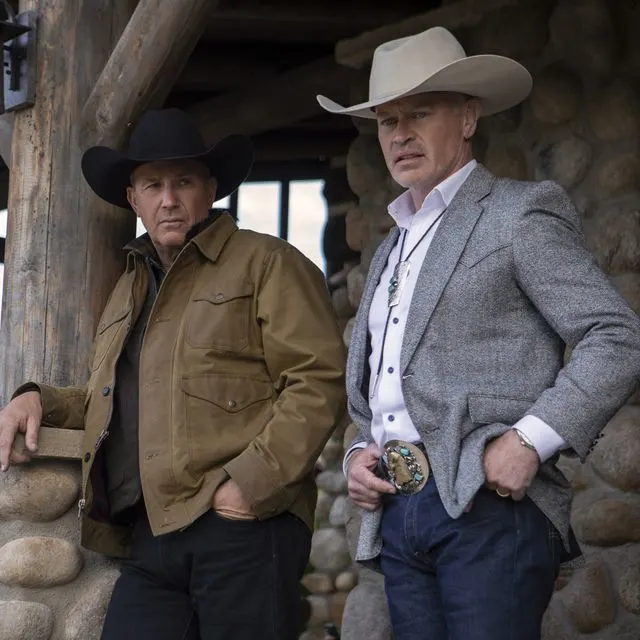Yellowstone Beck: A Comprehensive Guide To The Enchanting Natural Paradise
Yellowstone Beck is a term that resonates deeply with nature enthusiasts and adventurers alike, referring to the irresistible allure of Yellowstone National Park. Located primarily in Wyoming, this iconic park beckons millions of visitors annually with its breathtaking landscapes, geothermal wonders, and diverse wildlife. As one of the world's first national parks, Yellowstone continues to captivate hearts and minds, offering an unparalleled experience for those who venture into its vast wilderness.
Established in 1872, Yellowstone Beck has become synonymous with the preservation of natural beauty and ecological diversity. The park spans over 2.2 million acres and features an array of stunning attractions, including geysers, hot springs, canyons, and forests. This article will explore the many facets of Yellowstone, delving into its history, geography, wildlife, and the reasons why it continues to beckon travelers from all corners of the globe.
Whether you're planning a visit or simply curious about this natural wonder, this guide will provide you with all the information you need to understand why Yellowstone Beck holds such a special place in the hearts of so many. Let's dive deeper into the magic of this extraordinary destination.
Read also:Malcolm E Nettingham Middle School Photos A Comprehensive Look Into The Schools Legacy
Table of Contents
- The Rich History of Yellowstone
- Geography and Landscape of Yellowstone Beck
- Wildlife in Yellowstone National Park
- Geothermal Wonders
- Top Activities in Yellowstone
- Safety Tips for Exploring Yellowstone
- Best Seasons to Visit Yellowstone Beck
- Conservation Efforts in Yellowstone
- Visitor Information and Tips
- Conclusion: Why Yellowstone Beck is Irresistible
The Rich History of Yellowstone
Establishment of Yellowstone National Park
Yellowstone Beck's history dates back to the 19th century when explorers first discovered its remarkable natural features. In 1872, President Ulysses S. Grant signed the Yellowstone National Park Protection Act, officially establishing the park as the world's first national park. This groundbreaking decision was made to preserve the area's unique geothermal features and wildlife for future generations.
Early Exploration and Development
Early explorers such as Ferdinand V. Hayden and Nathaniel P. Langford played pivotal roles in promoting the establishment of Yellowstone. Their detailed reports and stunning photographs captured the imagination of the American public, leading to widespread support for the park's creation. Over the years, the park has undergone significant development, including the construction of roads, lodges, and visitor centers to accommodate the growing number of tourists.
Geography and Landscape of Yellowstone Beck
Yellowstone Beck is renowned for its diverse geography, which includes mountains, forests, rivers, and geothermal areas. The park sits atop a massive volcanic hotspot, contributing to its unique landscape. This section will explore the various geographical features that make Yellowstone so special.
Major Landmarks in Yellowstone
- Grand Prismatic Spring: The largest hot spring in the United States
- Old Faithful: One of the park's most famous geysers
- Yellowstone Canyon: Home to the stunning Yellowstone Falls
Wildlife in Yellowstone National Park
Yellowstone Beck is home to an incredible array of wildlife, making it a paradise for nature lovers and wildlife enthusiasts. The park is one of the few remaining intact ecosystems in the northern temperate zone, providing a sanctuary for numerous species.
Key Animal Species
- Grizzly Bears
- Elk
- Bison
- Gray Wolves
Conservation efforts have been instrumental in protecting these species, ensuring their survival in the wild. Yellowstone Beck serves as a vital habitat for many endangered and threatened animals, making it a critical area for biodiversity.
Geothermal Wonders
One of the most fascinating aspects of Yellowstone Beck is its geothermal activity. The park boasts over 10,000 geothermal features, including geysers, hot springs, mud pots, and fumaroles. These natural phenomena are a result of the underlying volcanic activity that defines the region.
Read also:Rick James Jr The Legacy Continues
Understanding Geothermal Activity
Geothermal activity in Yellowstone Beck is driven by the heat from the Earth's interior. This heat creates the conditions necessary for the formation of geysers and hot springs. Scientists continue to study these processes to better understand the dynamics of the Earth's crust and the potential risks associated with volcanic activity.
Top Activities in Yellowstone
Yellowstone Beck offers a wide range of activities for visitors to enjoy. Whether you're an avid hiker, photographer, or simply looking to relax and take in the scenery, there's something for everyone in this incredible park.
Popular Hiking Trails
- Mt. Washburn Trail
- Uncle Tom's Trail
- Lone Star Geyser Trail
Other Activities
- Wildlife Watching
- Boating on Yellowstone Lake
- Scenic Drives
Safety Tips for Exploring Yellowstone
While Yellowstone Beck is a beautiful and exciting destination, it's important to prioritize safety when visiting the park. The following tips will help ensure a safe and enjoyable experience:
- Stay on designated trails and boardwalks
- Keep a safe distance from wildlife
- Be prepared for changing weather conditions
- Carry plenty of water and snacks
Best Seasons to Visit Yellowstone Beck
Yellowstone Beck is a year-round destination, with each season offering its own unique charm. Summer is the busiest time, with mild temperatures and long daylight hours, making it ideal for hiking and wildlife watching. Winter, on the other hand, transforms the park into a snowy wonderland, perfect for snowmobiling and cross-country skiing.
Seasonal Highlights
- Spring: Witness the awakening of the park as wildlife emerges from hibernation
- Fall: Enjoy vibrant foliage and fewer crowds
Conservation Efforts in Yellowstone
Conservation is a top priority in Yellowstone Beck, with numerous initiatives aimed at protecting the park's natural resources. These efforts include monitoring wildlife populations, restoring native vegetation, and addressing the impacts of climate change.
Participating in Conservation
Visitors can contribute to conservation efforts by following park guidelines, participating in volunteer programs, and supporting organizations dedicated to preserving Yellowstone. Every small action helps ensure the long-term health and sustainability of this remarkable ecosystem.
Visitor Information and Tips
Planning a trip to Yellowstone Beck? Here are some essential tips to enhance your experience:
- Book accommodations and reservations in advance
- Check park alerts and updates regularly
- Bring appropriate gear for outdoor activities
Conclusion: Why Yellowstone Beck is Irresistible
Yellowstone Beck continues to captivate visitors with its stunning landscapes, diverse wildlife, and geothermal wonders. From its rich history to its ongoing conservation efforts, the park remains a symbol of natural beauty and preservation. Whether you're exploring its trails, marveling at its geysers, or observing its wildlife, Yellowstone offers an unforgettable experience that resonates deeply with all who visit.
We invite you to share your thoughts and experiences in the comments below. Consider sharing this article with friends and family who might appreciate the allure of Yellowstone Beck. For more insights into travel and nature, explore our other articles and discover the world's hidden gems.
Data Sources: National Park Service, U.S. Geological Survey, and Yellowstone Forever.


